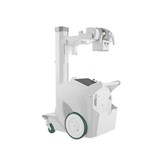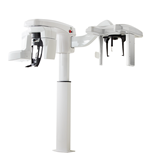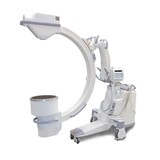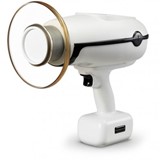Discover veterinary fitout costs, design tips, equipment and compliance rules for Australian clinics. Plan your clinic with expert local insight.
Key Takeaways
- Veterinary fitout costs in Australia range from $100,000 to $500,000, depending on clinic size, location, and equipment selection.
- Common veterinary equipment includes X-ray machines ($30,000–$80,000), dental units ($5,000–$15,000), and surgical tables ($3,000–$10,000).
- Design and installation costs typically make up 40–50% of the total budget.
- Financing options such as equipment loans and leasing can reduce upfront capital expenditure.
- Compliance with Australian standards (AS/NZS 4815:2006 for infection control, radiation safety regulations for X-ray equipment) is crucial.
- Fitout timeframe: 3 to 6 months, including planning, design, and construction.
Introduction
Setting up a veterinary clinic involves more than just purchasing medical equipment. A well-planned fitout ensures efficient workflow, compliance with regulations, and a comfortable environment for both pets and their owners. This guide breaks down the essential considerations, costs, and steps for buying and installing a veterinary fitout in Australia.
Understanding Veterinary Fitout Costs
Veterinary fitout costs vary widely based on clinic size, location, and equipment needs. Below is a general breakdown:
Cost Breakdown
- Basic Fitout (Small Clinic): $100,000 – $200,000
- Medium-sized Clinic: $200,000 – $350,000
- Large Veterinary Hospital: $350,000 – $500,000+
Cost Components
- Building & Construction: 40–50% (flooring, partitions, plumbing, electrical work)
- Medical Equipment & Furniture: 30–40%
- Technology & Software: 10–15% (practice management systems, imaging software)
- Permits & Compliance: 5–10%
Common Veterinary Equipment & Their Costs
Diagnostic & Imaging Equipment
- Digital X-ray Machine ($30,000 – $80,000): Essential for bone and internal injury assessments.
- Ultrasound Machine ($10,000 – $50,000): Used for pregnancy scans, organ diagnostics, and soft tissue evaluations.
- In-House Laboratory Equipment ($5,000 – $50,000): Blood analysers and microscopes help diagnose infections and diseases quickly.
Surgical & Treatment Equipment
- Surgical Table ($3,000 – $10,000): Adjustable and heated options improve patient comfort and procedural efficiency.
- Anaesthesia Machine ($5,000 – $15,000): Critical for pain management during surgeries.
- Autoclaves & Sterilisers ($2,000 – $10,000): Necessary for maintaining hygiene and infection control.
Dental & Examination Equipment
- Veterinary Dental Units ($5,000 – $15,000): High-speed drills and ultrasonic scalers for dental procedures.
- Examination Tables ($1,500 – $5,000): Hydraulic or electric lift tables improve workflow and ergonomics.
Installation & Design Considerations for Veterinary Clinics
A well-designed veterinary clinic ensures efficiency, compliance, and a stress-free environment for animals, staff, and clients.
Clinic Layout & Workflow
- Zoned Areas: Dedicated spaces for reception, exams, surgery, imaging, and recovery improve efficiency.
- Isolation Rooms: Essential for contagious animals to prevent disease spread.
- Open vs. Private Layouts: Open plans aid workflow, while private rooms offer noise control.
Hygiene & Ventilation
- Air Filtration Systems: Reduces airborne contaminants, essential for surgical and isolation areas.
- Non-Porous Surfaces: Epoxy flooring and stainless steel for easy cleaning.
- Handwashing Stations: Strategically placed for infection control.
Lighting & Ergonomics
- Bright LED Lighting: Adjustable for surgeries and exams.
- Natural Light: Reduces stress and enhances workspace comfort.
- Ergonomic Workstations: Adjustable tables and seating minimise strain.
Radiation Protection & Compliance
- Lead-Lined X-Ray Rooms: Prevents radiation exposure.
- Radiation Shielding Glass: Allows monitoring without risk.
- Mandatory Licensing: Compliance with Australian safety regulations.
Noise Reduction & Stress Management
- Soundproofing: Acoustic panels and rubber flooring minimise noise.
- Separate Waiting Areas: Reduces stress for different animal types.
- Calming Features: Soft lighting, pheromone diffusers, and quiet zones.
Storage & Organisation
- Dedicated Storage Areas: For medical supplies and pharmaceuticals.
- Cold Storage: Essential for vaccines and temperature-sensitive meds.
- Custom Shelving: Ensures easy access to frequently used items.
Client Accessibility & Experience
- Wheelchair Access & Pet-Friendly Design: Compliance with Australian standards.
- Comfortable Waiting Areas: Seating, refreshments, and entertainment.
- Non-Slip Flooring & Leash Hooks: Enhances pet safety and convenience.
Energy Efficiency & Sustainability
- LED Lighting & Low-Energy Equipment: Reduces electricity costs.
- Solar Panels: Sustainable energy option.
- Eco-Friendly Materials: Non-toxic, recycled materials for construction.
A well-planned fitout ensures efficiency, compliance, and a welcoming atmosphere for clients and their pets. Let me know if you'd like further refinements!
Maintenance, Parts & Warranties
-
Routine Maintenance:
- X-ray machines: Annual servicing ($2,000 – $5,000 per year)
- Autoclaves: Monthly maintenance and calibration
- Dental units: Regular cleaning to prevent blockages
-
Warranty Considerations:
- Most veterinary equipment comes with a 1–5 year warranty.
- Extended warranties may cost 5–10% of equipment price.
Compliance & Certification in Australia
Veterinary Licensing & Accreditation
- State & Territory Registration: Clinics must be licensed by the relevant Veterinary Surgeons Board in their state.
- AVA Accreditation: Not mandatory but enhances credibility and ensures best practices.
Radiation Safety & X-Ray Compliance
- Radiation Use Licence: Required for X-ray and CT operators.
- Shielding & Safety: X-ray rooms need lead-lined walls and protective barriers.
- Annual Inspections: Imaging equipment must undergo regular safety checks.
Infection Control & Biosecurity
- Sterilisation Compliance (AS/NZS 4815:2006): Use of autoclaves, disinfectants, and single-use instruments.
- Biosecurity Rules (DAFF Guidelines): Disease control protocols for handling animals.
Workplace Health & Safety (WHS)
- Safe Work Australia Regulations: Clinics must provide manual handling training, PPE, and waste disposal systems.
- Emergency Preparedness: Staff must be trained in animal restraint, CPR, and first aid.
Zoning, Building & Fire Safety
- Council Approvals: Clinics must comply with local zoning laws and development permits.
- Fire Safety (AS 1851): Clinics need fire exits, emergency lighting, and suppression systems.
- Disability Compliance: Clinics must provide wheelchair access and disabled-friendly restrooms.
Pharmaceutical & Controlled Substances Compliance
- Secure Storage: Prescription drugs, including S4 and S8 medications, must be kept in locked, temperature-controlled areas.
- Record-Keeping: Detailed logs for prescribing, dispensing, and disposal are mandatory.
Financing Options
Veterinary fitouts are capital-intensive, but financing options can ease the financial burden:
- Equipment Loans: Banks and specialist lenders offer loans at 5–10% interest rates.
- Leasing: Monthly payments instead of large upfront costs.
- Government Grants: Some state incentives may apply for new clinics.
FAQs on Veterinary Fitouts
How long does a veterinary fitout take?
A complete fitout takes 3–6 months, depending on complexity and council approvals.
Can I buy second-hand veterinary equipment?
Yes, second-hand equipment can reduce costs, but always check warranties and service history.
What is the biggest cost factor in a veterinary fitout?
Medical equipment and construction work usually account for 70–80% of the total cost.
Do I need council approval for a veterinary clinic?
Yes, you may need Development Approval (DA) and Building Approval (BA) depending on local zoning laws.
What are the best ways to finance a veterinary fitout?
A mix of equipment loans, leasing, and tax incentives can help manage costs.
Conclusion
A veterinary fitout is a significant investment, but with careful planning, the right equipment selection, and strategic financing, you can build a modern and efficient clinic. Prioritising compliance, workflow efficiency, and cost management ensures a long-term successful veterinary practice in Australia.








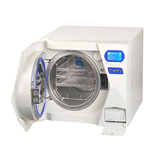




-160x160-state_article-rel-cat.png)





